Body
Totnes - Twinned With Narnia
Posted on 24th August 2025
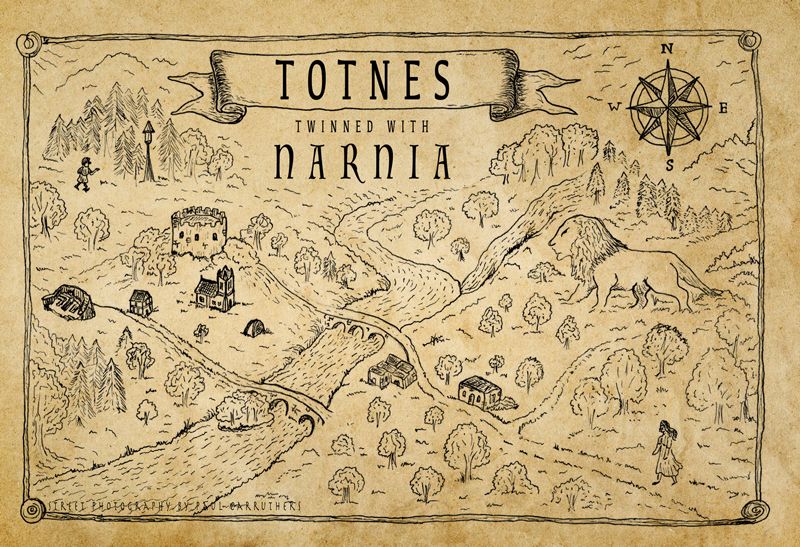
They say you should never stop looking for magic, even when you’re all grown-up. For me, that’s what street photography is all about – trying to find a little magic in the mundane.
With that in mind I’ve been working on a street photography project in Totnes, South Devon, for a few years now — documenting the characters, oddities, and small pockets of magic that make this town so unlike anywhere else.
Totnes has always been a place of eccentricity: part medieval town, part bohemian dream.
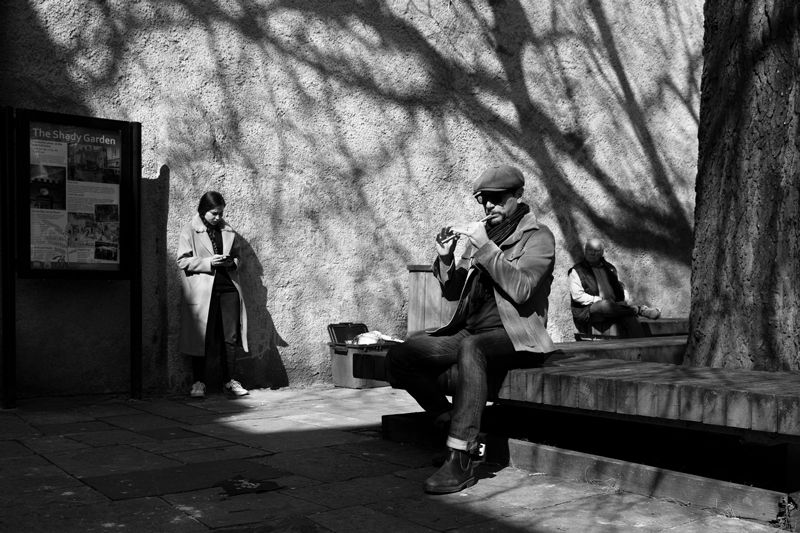
It has always been an enjoyable town to photograph too, but over the last few months, something shifted. The ordinary began to mingle with the extraordinary, and suddenly, I found myself not just photographing the town and its people (as I have for years), but chasing the traces of Narnia within it.
Why Narnia? Well, in the early 2000’s a sign outside of Totnes read: Totnes, Twinned with Narnia. It summed up a long standing cultural feeling within the town, and was the calling card of Rob Hopkins and his Transition Town movement, a movement which aimed to be environmentally conscious and encourage the self-sufficiency of the local town. Though by 2019 the Totnes Pound had died, and the wave of globalisation had even shaken Totnes, with a number of chains entering the town like Coffee Number One and Bruto Lounge, there still remains a magic and mystery that goes beyond the overtly political.
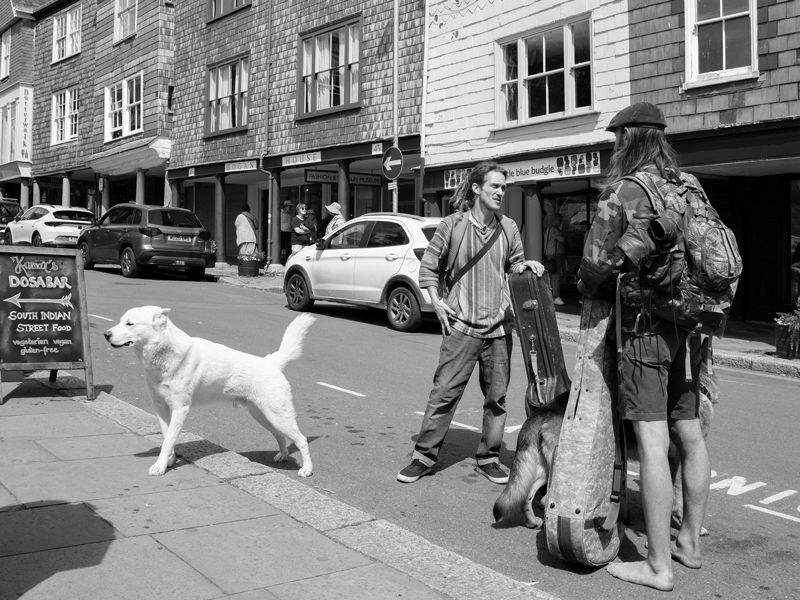
My first clue to this magic? It was in the shady garden, where I swore I could see Mr Tumnus himself, sitting on a worn bench, flute in hand, half-lost in thought, playing a beautiful tune. He gave me a knowing smile as I clicked the shutter, and off I went thinking to myself how much of Narnia I could actually find.
Narnia is important to me in its own way. I’ve read it to each one of my three children, just before bedtime, when they were very young. I think it’s one of the reasons they all love books.
The sense of magic and wonder – found in most books, but especially thematic in Narnia – is important. It's why, at the end of Narnia, Susan doesn't return to Aslan’s Country. She's bogged down in the real world; dismisses Narnia as childish fantasy. Totnes has no time for Susan’s.
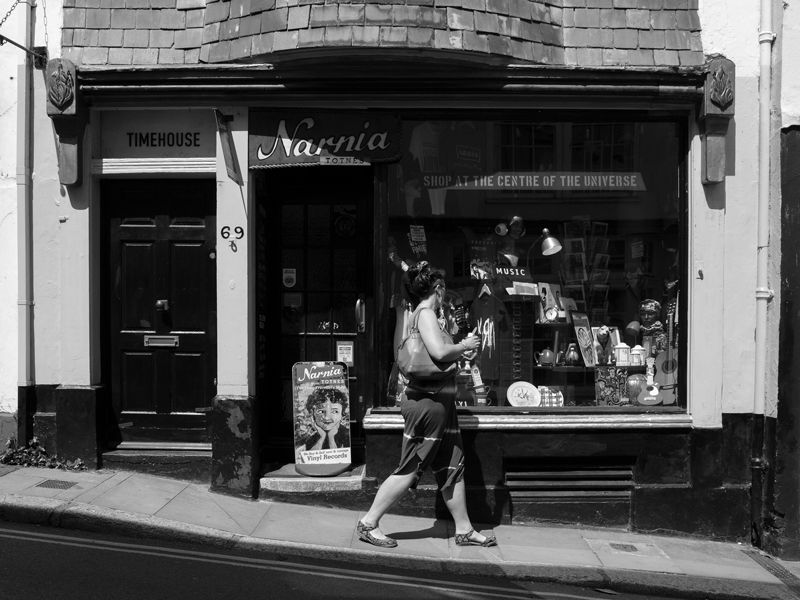
Onwards I went, photographing. It was a blur of wonder over the next few months. I photographed a beautiful lady with a red scarf waving as she walked by – like the one Mr Tumnus wore. The iconic lamppost appears in front of you again and again around each turn, leading you deeper and deeper into the town.
Then came the lion — not Aslan, perhaps, but a great stone guardian above the church carved with history in his face. It looked like the White Witch had already cursed him. As I paused to take some pictures, I half expected him to come alive and roar.
And then, my version of the wardrobe: a young girl riding a red suitcase down Fore Street, her hair flying as she laughed with friends, even with the suitcase wobbling. She didn’t care — she was off on an adventure. I clicked the shutter just as she passed the climate hub, the image framed like a portal. It was pure joy.
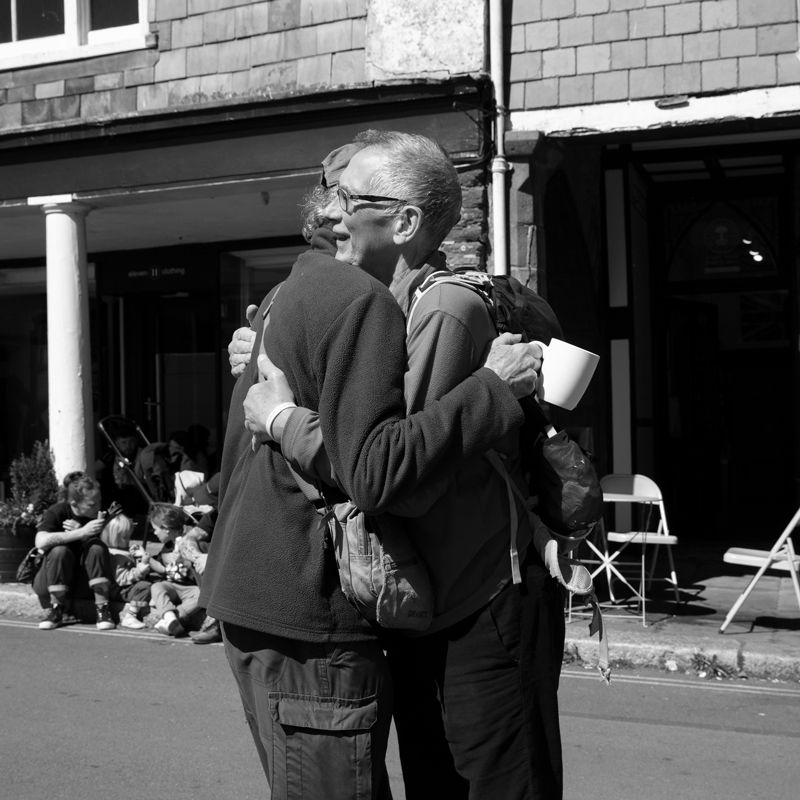
The most surreal moment? The statue. Cast in stone, frozen in time, a look of surprise on its face. Caged in wrought iron as if the White Witch herself had put a spell on her.
Later, I stumbled into Cranch’s sweet shop. I had my children in tow – I tend to drag them with me on these adventures – and they have a habit of leading me to sweet shops instead. A nice lady with a glint in her eyes offered me Turkish delight on a silver tray. I couldn’t help but laugh. I have this weird memory of it tasting like flowers and warned my children not to try it, as we all grabbed a piece and in one voice declared: “Yes, it does taste like flowers.” How anyone can be enticed by Turkish Delight is beyond me.
I found other little clues: a Robin, the not so subtle Narnia shop, a gold crown on a young man wandering alone, who seemed oblivious to the fact he was wearing a gold crown. I may have even glimpsed the White Witch.
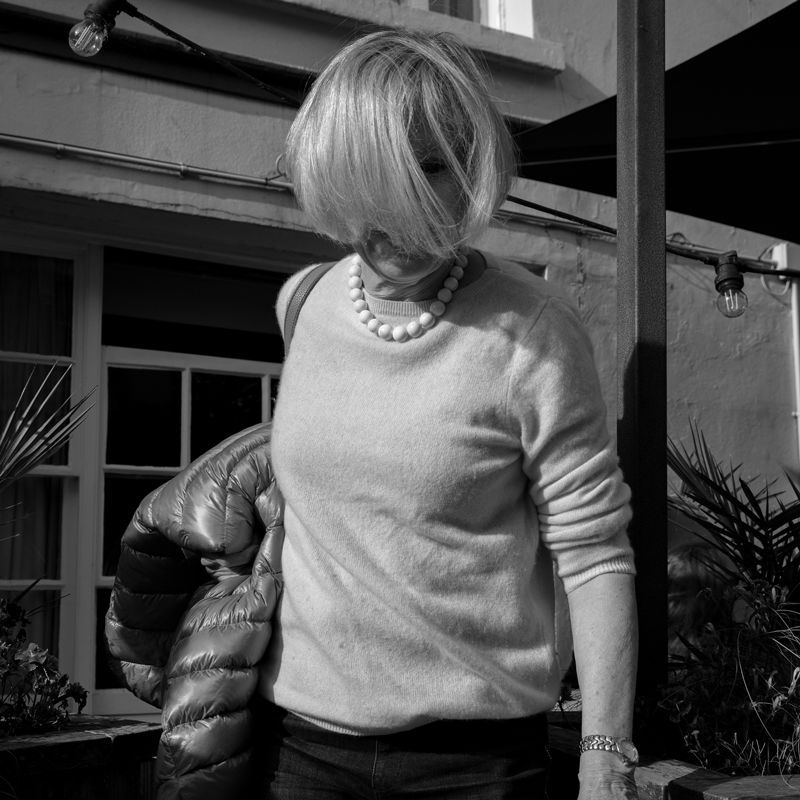
But perhaps the most magical part of all isn’t in the objects or clues — it’s in the people of Totnes themselves. Every time I head out with my camera, I meet someone new who looks like they’ve just stepped out of a dream: cloaked figures, painted faces, storytellers, buskers , dancers and drifters. The streets are rich with myth, soaked in story, populated by characters who defy explanation but demand to be captured.
I’ve sung Dylan’s ‘Like A Rollin Stone’ outside the therapist's office with Brieve (we got told off for being too loud and ruining a therapy session). I’ve heard some cracking jokes from Kev the Big Issue guy. I even heard about the naughty exploits of a 60’s rock star from a very nice old lady I met under Brutus Bridge - she’d apparently dated him, back in the day.
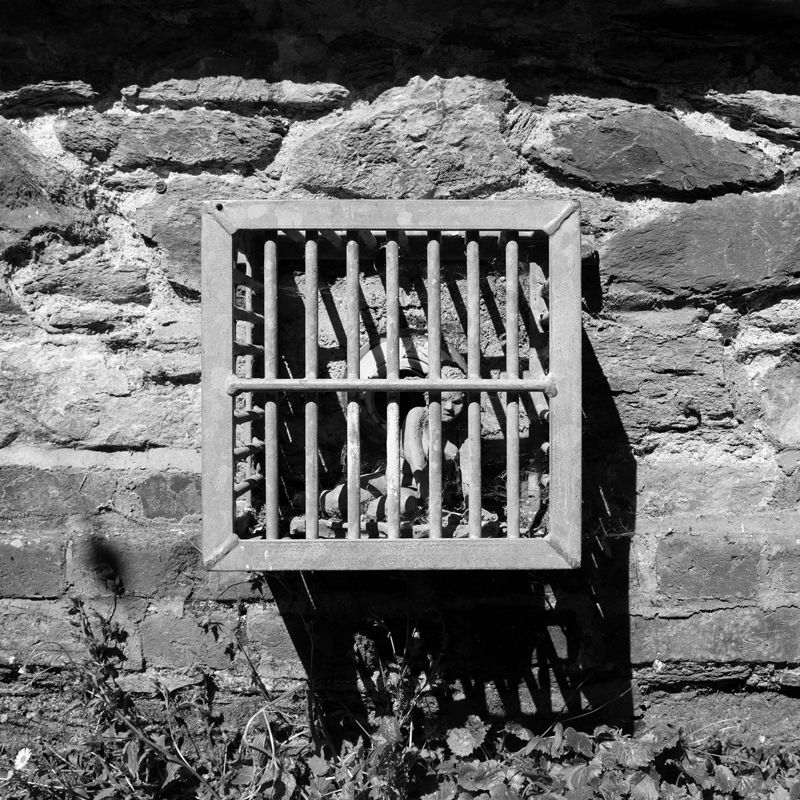
I even found the Narnia book in the Cancer research shop selling for a bargain price.
This project began as a documentation of street life — the real, the raw, the fleeting. But over time, it’s become something else. A search for wonder. A quiet quest. A belief that even on the greyest days, a doorway to another world might be just around the corner.
Totnes may not be Narnia. But if any town could be hiding its entrance, this is the one.

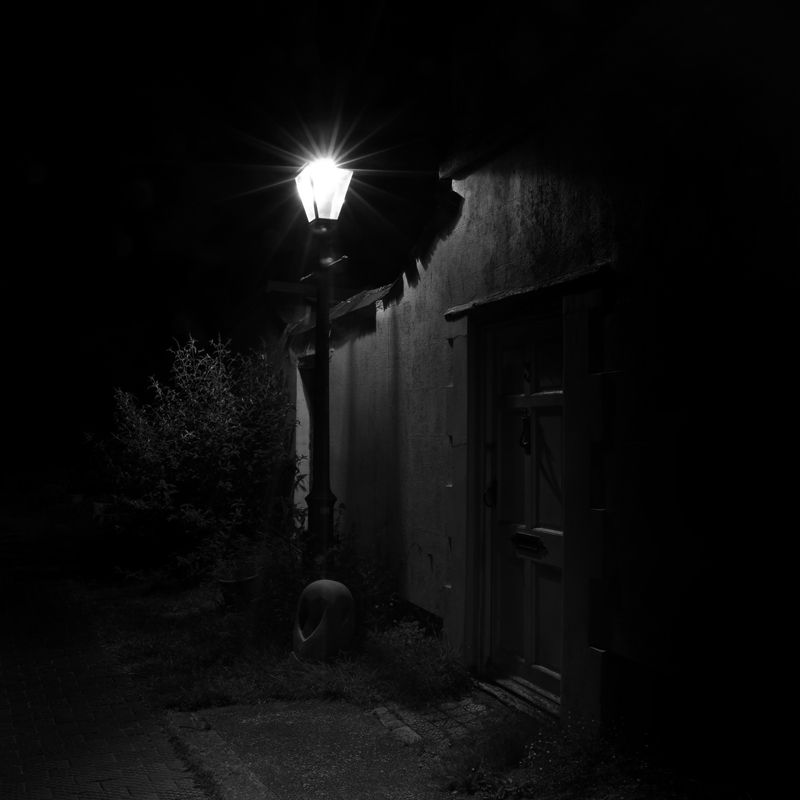
A little breaking news about the series - It has only gone and grabbed third place in the fantastic International Photo Awards for my book proposal.
The International Photo Awards Winner
And if that wasn't enough Totnes - Twinned With Narnia has gone and won a Silver Award in the book catergory in the equaly amazing PX3 Awards.
Thank you everyone for your support.
